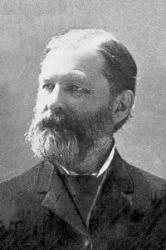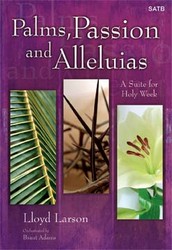- |
User Links
Christ Arose

Low in the grave He lay, Jesus, my Savior
Author: Robert Lowry (1874)Tune: CHRIST AROSE
Published in 471 hymnals
Printable scores: PDFPlayable presentation: Lyrics only, lyrics + musicAudio files: MIDI, Recording
Representative Text
1 Low in the grave he lay, Jesus my Savior,
waiting the coming day, Jesus my Lord!
Refrain:
Up from the grave he arose;
with a mighty triumph o'er his foes;
he arose a victor from the dark domain,
and he lives forever, with his saints to reign.
He arose! He arose! Hallelujah! Christ arose!
2 Vainly they watch his bed, Jesus my Savior,
vainly they seal the dead, Jesus my Lord! [Refrain]
3 Death cannot keep its prey, Jesus my Savior;
he tore the bars away, Jesus my Lord! [Refrain]
United Methodist Hymnal, 1989
Author: Robert Lowry
 Robert Lowry was born in Philadelphia, March 12, 1826. His fondness for music was exhibited in his earliest years. As a child he amused himself with the various musical instruments that came into his hands. At the age of seventeen he joined the First Baptist Church of Philadelphia, and soon became an active worker in the Sunday-school as teacher and chorister.
At the age of twenty-two he gave himself to the work of the ministry, and entered upon a course of study at the University of Lewisburg, Pa. At the age of twenty-eight he was graduated with the highest honors of his class. In the same year of his graduation, he entered upon the work of the ministry. He served as pastor at West Chester, Pa., 1851-1858; in New York City, 1859-1861;… Go to person page >
Robert Lowry was born in Philadelphia, March 12, 1826. His fondness for music was exhibited in his earliest years. As a child he amused himself with the various musical instruments that came into his hands. At the age of seventeen he joined the First Baptist Church of Philadelphia, and soon became an active worker in the Sunday-school as teacher and chorister.
At the age of twenty-two he gave himself to the work of the ministry, and entered upon a course of study at the University of Lewisburg, Pa. At the age of twenty-eight he was graduated with the highest honors of his class. In the same year of his graduation, he entered upon the work of the ministry. He served as pastor at West Chester, Pa., 1851-1858; in New York City, 1859-1861;… Go to person page >Text Information
Related Texts
| First Line: | Low in the grave He lay, Jesus, my Savior |
| Title: | Christ Arose |
| Author: | Robert Lowry (1874) |
| Meter: | 11.10 with refrain |
| Language: | English |
| Refrain First Line: | Up from the grave He arose |
| Notes: | Spanish translation: See "La tumba le encerró" by George P. Simmonds; Polish translation: See "Porzucil grobucień"; Swahili translation: See "Mie kaburini" |
| Copyright: | Public Domain |
Chinese
English
- 112 Familiar Hymns and Gospel Songs #104
- A Junior's Praise #104
- A Treasury of Hymns: The best-loved hymns, carols, anthems, children's hymns, and gospel songs #328
- A. M. E. C. Hymnal #129
- A.M.E. Hymnal: with responsive scripture readings...(The Richard Allen A.M.E. Hymnal) #d229
- Abiding Songs: A special collection of standard hymns and gospel songs, long-cherished and forever abiding. Designed to generate wholesome, worshipful services of song among all organizations of ... #102
- African American Heritage Hymnal #283
- African Methodist Episcopal Church Hymnal #168
- Alexander's Gospel Songs #62
- Alexander's Gospel Songs No. 2 #81 10 shown out of 356
Korean
Spanish
Notes
Scripture References:
st. 1 = Matt. 27:59-60
st. 2 = Matt. 27:66
st. 3 = Acts 2:24
ref. = Matt. 28:2-10
Robert S. Lowry (b. Philadelphia, PA, 1826; d. Plainfield, NJ, 1899) composed both text and tune of this Easter gospel hymn in 1874 while he was pastor of the First Baptist Church, Lewisburg, Pennsylvania. The hymn was published in Brightest and Best (1875), a church school songbook edited by Lowry and William Doane (PHH 473).
The meditative stanzas of this testimony hymn contrast with its dramatic refrain–"He arose!" That refrain recalls for us the angel's announcement: "He is not here; he has risen!" (Luke 24:6a). Originally the first line read, "Low in the grave He lay."
Although Lowry valued his preaching ministry much more than his writing of hymns, he attained a lasting name in the gospel music tradition. Educated at Bucknell University, he returned there to become a professor of rhetoric from 1869-1875. He was also a pastor at Baptist churches in Pennsylvania, New York, and New Jersey. Known nationally as the editor of numerous Sunday school song collections for publishers Biglow and Maine in New York, Lowry also collaborated with William H. Doane to produce gospel hymnals and Sunday school songbooks such as Bright Jewel (1869), Hymn Service (1871-1873), Welcome Tidings (1877), Gospel Hymn and Tune Book (1879), and Glad Refrain (1886).
Liturgical Use
Easter morning; for sunrise services play in the B-flat setting; for Easter morning worship at the usual hour look for a setting in C major (see 1959 Psalter Hymnal) Easter mornings can bear that extra lift!
--Psalter Hymnal Handbook, 1988
Access an additional article on the Canterbury Dictionary of Hymnology:
Tune
CHRIST AROSEThe gospel tune CHRIST AROSE captures well the drama of Christ's resurrection with the ascending ("rocket") figures in the refrain. Undoubtedly, the refrain line has greatly enhanced this hymn's popularity. Sing in harmony with crisp rhythms and marcato accompaniment on the refrain. After the final…
For Leaders
Text:
This jubilant Easter text was written in 1874 by Robert Lowry, and was published in a Sunday school songbook edited by Lowry and William Doane in 1875, Brightest and Best. The hymn was used by Dwight L. Moody and Ira D. Sankey in their revivals in Great Britain, and was widely popular in America as well.
This hymn has multiple titles: “Christ Arose,” “Low in the Grave He Lay,” and “Up from the Grave He Arose.” The themes of the stanzas and the refrain contrast each other. The stanzas focus on Jesus in the tomb. The refrain exultantly celebrates that Jesus is now risen and victorious over His evil enemies.
Tune:
Robert Lowry wrote this tune in 1874 for his text, hence the name CHRIST AROSE. The music for the stanzas is subdued, with a narrow melodic range, and simple rhythm. The dotted rhythms, wide range, and melodic leaps of the refrain melody provide a strong contrast to the stanzas as in the text. Throughout the refrain, the lower voices echo back the words, “He arose!” in a resounding antiphon. In the first edition, the refrain was marked “Faster,” a performance practice that has become standard. Sometimes, a ritardando is marked in the penultimate measure, which allows an easy return to the tempo of the stanzas, as well as an opportunity to spend a little more time on the triumphant words, “Hallelujah! Christ arose!”
When/Why/How:
This hymn would make an excellent choice for an opening hymn on Easter Sunday, especially for a sunrise service. An energetic handbell arrangement, such as “Up from the Grave He Arose” is one way to begin the celebration. A brass trio such as “Christ Arose” is another idea to give a touch of rousing jubilation to the opening of an Easter service. For a variation on the usual practice of opening with the subdued mood of the stanzas, try singing the refrain first as a burst of joy in the celebration the church has been eagerly anticipating all through Lent and especially Holy Week. Then sing the stanzas to rehearse what has led up to this moment. The piano arrangement of CHRIST AROSE that is part of the collection “What Wondrous Love!” demonstrates how to quietly open the hymn.
The hymn would also work well in medley with other Easter hymns. “Raise Your Joys and Triumphs High” is a handbell medley of “Christ the Lord Is Risen Today,” “Up from the Grave He Arose,” and “All Hail the Power of Jesus' Name.” A bright musical interlude between the hymns maintains the overall mood and provides a sense of connection between the various tunes.
Tiffany Shomsky, Hymnary.org
Timeline
Arrangements
Media
Psalter Hymnal (Gray) #396
The United Methodist Hymnal #322
Worship and Rejoice #294
- MIDI file from Baptist Hymnal 1991 #160
- MIDI file from Baptist Hymnal 1991 #160
- Audio recording from Baptist Hymnal 2008 #273
- MIDI file from The Cyber Hymnal #3782
- Audio recording from Lift Up Your Hearts: psalms, hymns, and spiritual songs #186
- MIDI file from Psalter Hymnal (Gray) #396
- MIDI file from Psalter Hymnal (Gray) #396
- Audio recording from Small Church Music #289
- Audio recording from Small Church Music #289
- Audio recording from Trinity Hymnal (Rev. ed.) #276
- MIDI file from Timeless Truths #939
- Audio recording from The Worshiping Church #235
- MIDI file from The United Methodist Hymnal #322
- Audio recording from The United Methodist Hymnal #322
- MIDI file from Worship and Rejoice #294
- MIDI file from With Heart and Voice: songs for all God's children #100
- MIDI file from With Heart and Voice: songs for all God's children #100


 My Starred Hymns
My Starred Hymns






